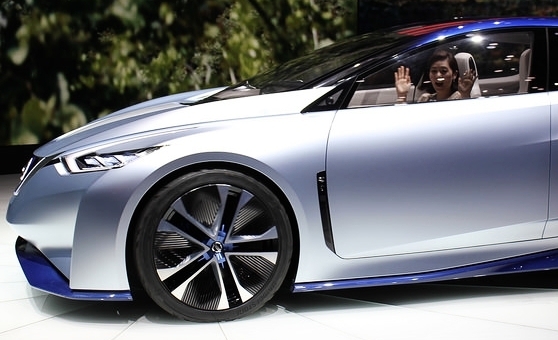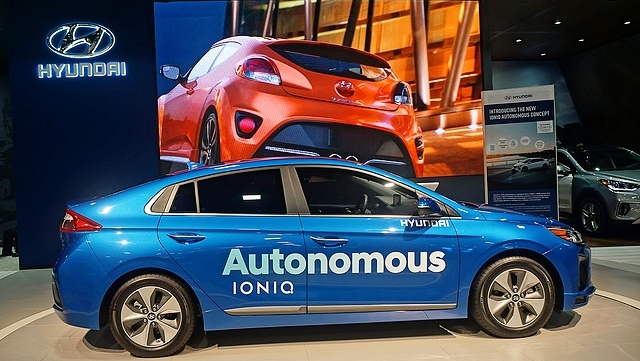Pizza delivery in Ann Arbor, Michigan just got a lot more interesting. Starting this month, Domino’s customers in Northeast Ann Arbor have the opportunity to have their pizza delivered to them by car and car alone - no delivery man required! The Ford Motor Company and Domino’s Pizza are working together on a project to deliver pizza via autonomous vehicle, to randomly selected customers in Ann Arbor.
According to The New York Times (NYT), Ford is using specially designed self-driving Ford Fusion Hybrids to deliver Domino’s pizza. The cars have been designed to deliver data back to Ford regarding how smoothly the car travels through the city and makes the deliveries. That data is extremely important to the company, as they are hoping to start producing fully autonomous vehicles, without steering wheels or pedals, by 2021. It’s an especially daunting task as the NYT reports that Ford has been viewed as relatively "lagging" in the autonomous technology game compared to other car manufacturers. So, Ford may be hoping this pizza delivery experiment will help to put them ahead.
Domino’s Pizza, a company founded near Ann Arbor, is more interested in what happens specifically during the last few minutes of the delivery. What will happen when customers are faced with a self-driving car and no delivery man? Will customers be unhappy about having to come out of their houses to interact with the delivery car? What happens if the customer can’t figure out how to get the pizza out of the car, or there’s a problem with the order? This is all information Domino’s, and the autonomous service industry as a whole, need to know in order to move forward with driverless delivery vehicles. One thing customers are sure to love is that no driver means no tip!
So, what about the delivery vehicle itself? Well, these aren’t your standard delivery cars, on the inside or the outside. The cars are white with large black lettering that says “self-driving” and “experimental,” in an effort to avoid as many car collisions as possible. On the roof of the car are sensors, software, fusions, and radar laser beams that are all used to scan the road and send data back to Ford. The car is even able to text the customer when it is approaching the delivery address. On the rear passenger side window is large red arrow that says “start here,” directing the customer to a touchscreen. Here, the customer will enter the last 4 digits of their phone number, which will open the compartment of the car that holds the food. There is space for 5 pizzas and 4 sides and each car is designed to keep the food warm during the ride.
The driverless delivery experiment was supposed to start on August 28, 2017, but was delayed due to inclement weather, since the equipment on the outside of the car cannot yet withstand heavy rain. Domino’s and Ford say they plan on continuing the experiment through September, with the cars making 3-6 deliveries a day. While the project is in testing, the cars will be manned, with both a Ford researcher who can override the vehicle in order to avoid any motor vehicle accidents, and a Domino’s employee who is there to observe the behavior of the customer. With two humans in the car until all of the autonomous kinks are ironed out, hopefully, no one in Ann Arbor will have to call a car accident lawyer!
Contrary to the popular belief that 'robots' such as self-driving cars are going to put humans out of work, Domino’s insists they are not looking to replace drivers with autonomous cars. Mr. Kelly Garcia, Domino’s senior vice president for e-commerce development, said, “We could use autonomous cars to fill in where we have a shortage of drivers, or add capacity during surges in business. We will have drivers for a long time. This is not about reducing labor costs.”
While self-driving pizza delivery may seem outlandish to some, it’s quite possible it did not come as much of a surprise to Ann Arbor residents, since the city and the University of Michigan are home to a great deal of autonomous vehicle testing. Readers may remember The Michigan Law Firm, PLLC has written about the university’s driverless shuttles that transport students around the North Campus, as well as MCity, the university’s testing ground for self-driving cars.
Driverless food delivery is yet another leap forward for self driving technology. While many organizations are still concentrating on autonomous cars being able to transport people, companies like Ford and Domino’s are already looking ahead to the transportation of goods. If the experiment is successful, it could make way for a wide range of delivery services. Next thing you know, a Fedex truck might show up at your house with no delivery man to toss a package onto your lawn!
Self-driving cars continue to be an exciting step forward for driving technology. Presently however, no amount of innovation in the automotive industry can fully guarantee that drivers will always be safe and that auto accidents won’t happen. If you have been injured in an motor vehicle accident, call The Michigan Law Firm, PLLC at 844.4MI.FIRM, for a free legal consultation.


















